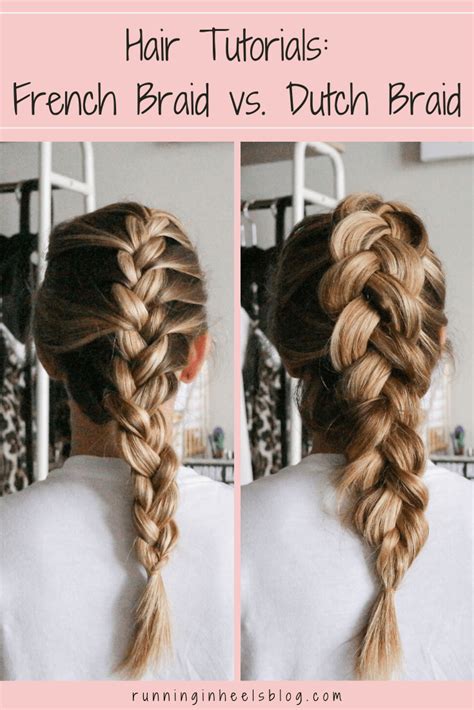Introduction
From catwalks to street style, braids have become an integral part of modern hair fashion. Among the most popular braid styles are the Dutch and French braids, each offering distinct aesthetics and applications. This comprehensive guide will delve into the nuances of these two braiding techniques, exploring their similarities, differences, and practical uses.

Understanding the Basics
1. Dutch Braids: Also known as inside-out braids, Dutch braids are characterized by their raised, three-dimensional appearance. They are created by crossing the outermost hair strands under the middle strand, creating a distinct “pop-out” effect.
2. French Braids: French braids, on the other hand, feature a flatter, more intricate design. They are formed by crossing the outermost strands over the middle strand, creating a “crown-like” pattern.
Key Differences
| Feature | Dutch Braid | French Braid |
|---|---|---|
| Appearance | Raised, three-dimensional | Flatter, more intricate |
| Strand Crossovers | Outermost strands cross under | Outermost strands cross over |
| Effect | Pop-out, voluminous | Crown-like, decorative |
| Skill Level | Moderate | Advanced |
| Execution Time | Faster | Slower |
Applications and Styling Tips
Both Dutch and French braids offer versatile styling options.
Dutch Braids:
– Create a bold and eye-catching look on all hair types.
– Ideal for everyday wear, workouts, and special occasions.
– Can be incorporated into buns, ponytails, and updos.
– Suitable for both long and medium hair lengths.
French Braids:
– Add a touch of elegance and sophistication to any outfit.
– Perfect for weddings, formal events, and everyday wear.
– Enhance hair volume and create a flattering frame for the face.
– Well-suited for long and very long hair lengths.
Choosing the Right Braid
The choice between a Dutch braid and a French braid depends on personal preference and the desired look.
Choose a Dutch Braid if you want:
– A raised, three-dimensional hairstyle.
– A quick and easy styling solution.
– A versatile braid that can be dressed up or down.
Choose a French Braid if you want:
– A more intricate and decorative style.
– A flatter braid that complements formal outfits.
– A braid that creates volume and frames the face.
Pain Points and Motivations
Understanding the pain points and motivations of potential braid wearers is crucial for hair stylists.
Pain Points:
– Difficulty creating precise and even braids.
– Limited styling options and lack of volume in fine hair.
– Time-consuming braiding process.
Motivations:
– Enhance hair texture and create versatile hairstyles.
– Protect hair from damage and improve scalp health.
– Express creativity and personal style.
Future Applications
The popularity of braids has inspired innovative applications in various industries.
Cosmetics:
– Create intricate hair art designs using different braiding techniques.
– Introduce new hair products specifically formulated for braid care and maintenance.
Healthcare:
– Utilize braids for therapeutic purposes, such as reducing stress and promoting relaxation.
– Use braids as non-invasive diagnostic tools to identify hair and scalp conditions.
Fashion:
– Integrate braids into clothing and accessories to enhance style and appeal.
– Explore new braid patterns and variations to create unique fashion statements.
Conclusion
Dutch braids and French braids offer distinct aesthetic advantages and practical applications. Understanding the nuances of each technique empowers hair stylists and individuals to make informed choices. By addressing pain points and leveraging motivations, innovative applications can be unlocked, further expanding the versatility and impact of braids in modern life.
